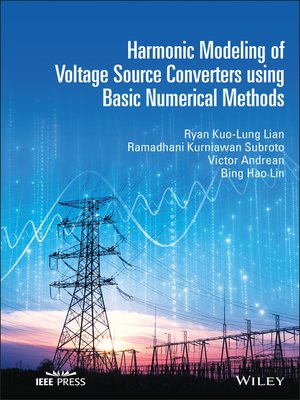Harmonic Modeling of Voltage Source Converters Using Basic Numerical Methods
ebook ∣ IEEE Press
By Ryan Kuo-Lung Lian

Sign up to save your library
With an OverDrive account, you can save your favorite libraries for at-a-glance information about availability. Find out more about OverDrive accounts.
Find this title in Libby, the library reading app by OverDrive.



Search for a digital library with this title
Title found at these libraries:
| Library Name | Distance |
|---|---|
| Loading... |
One of the first books to bridge the gap between frequency domain and time-domain methods of steady-state modeling of power electronic converters
Harmonic Modeling of Voltage Source Converters using Basic Numerical Methods presents detailed coverage of steady-state modeling of power electronic devices (PEDs). This authoritative resource describes both large-signal and small-signal modeling of power converters and how some of the simple and commonly used numerical methods can be applied for harmonic analysis and modeling of power converter systems. The book covers a variety of power converters including DC-DC converters, diode bridge rectifiers (AC-DC), and voltage source converters (DC-AC).
The authors provide in-depth guidance on modeling and simulating power converter systems. Detailed chapters contain relevant theory, practical examples, clear illustrations, sample Python and MATLAB codes, and validation enabling readers to build their own harmonic models for various PEDs and integrate them with existing power flow programs such as OpenDss.
This book:
Harmonic Modeling of Voltage Source Converters using Basic Numerical Methods is an indispensable reference and guide for researchers and graduate students involved in power quality and harmonic analysis, power engineers working in the field of harmonic power flow, developers of power simulation software, and academics and power industry professionals wanting to learn about harmonic modeling on power converters.







